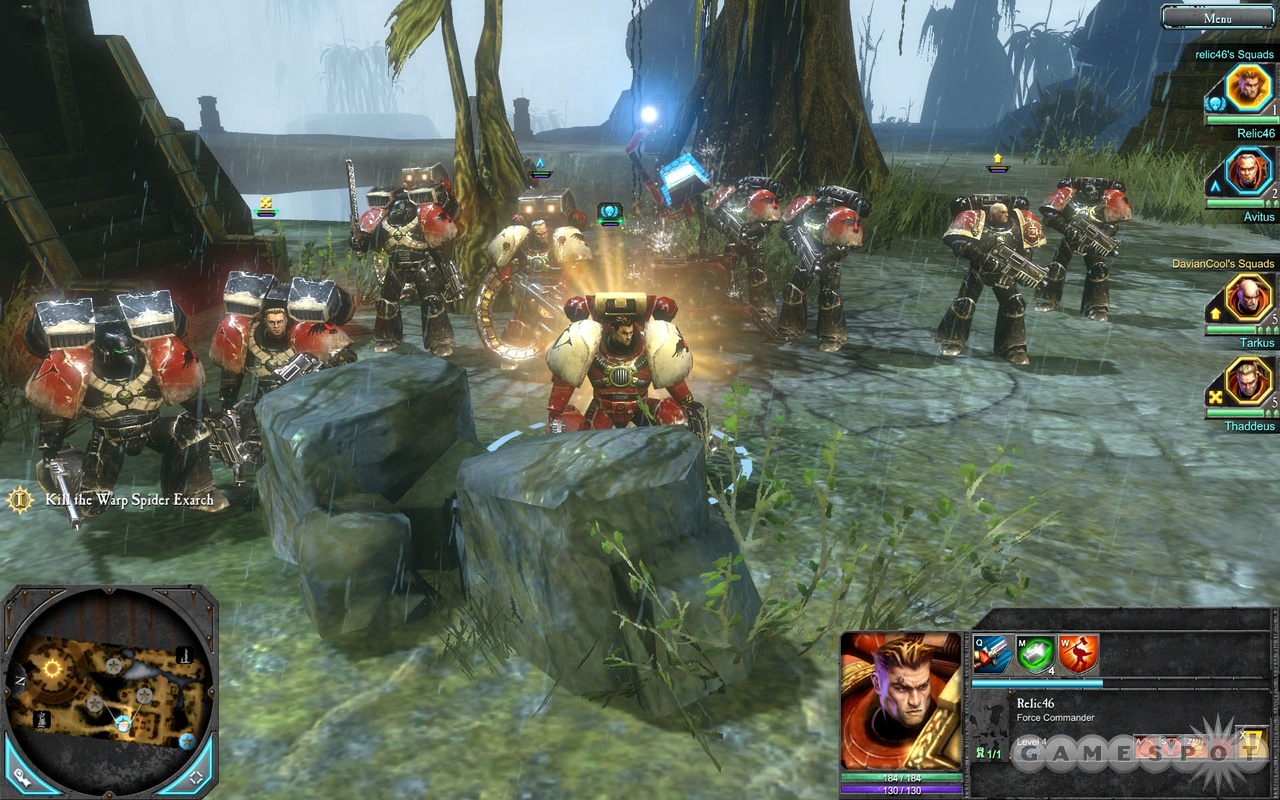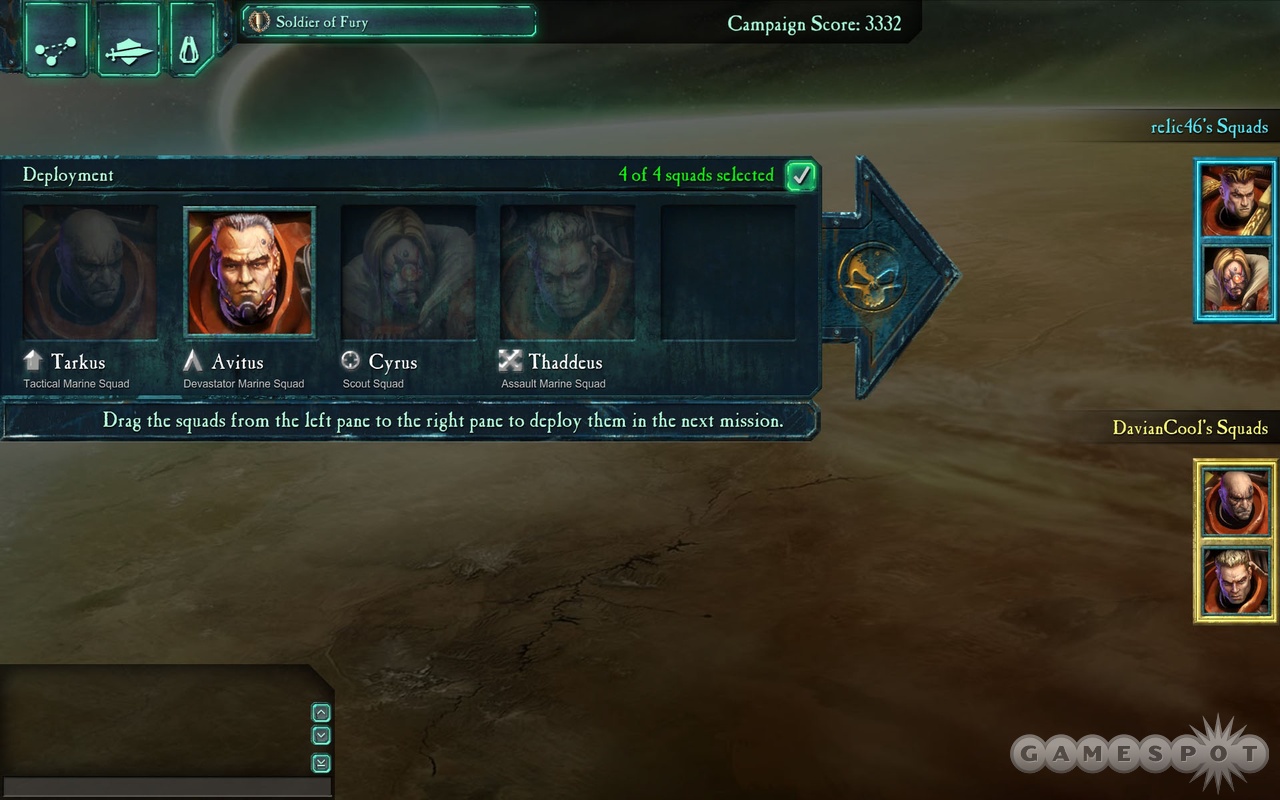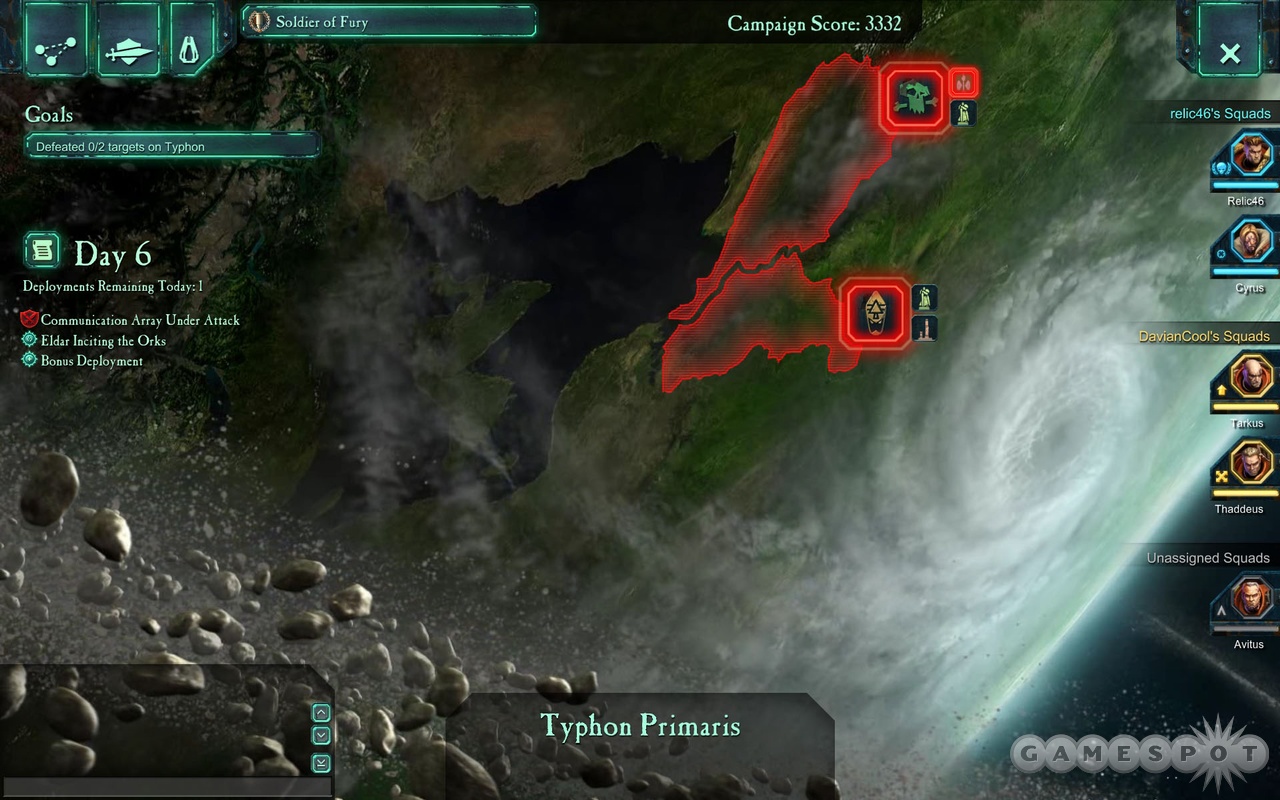Warhammer 40,000: Dawn of War II Exclusive Updated Hands-On - Co-Op Multiplayer and Act II
We try our hand at cooperative multiplayer and have exclusive hands-on impressions to report.
Next time you're playing a real-time strategy game, try listening carefully. If you can't hear the quiet thumping sound of teeny-tiny peasants chopping wood as you send those little peasant buddies of yours to gather resources that you can spend on building up structures that eventually churn out an army, it's because it's all getting drowned out by the sound of rocket-propelled progress. And big green guys that sound suspiciously like soccer hooligans. Thanks to explosive games like the Warhammer 40,000: Dawn of War series, real-time strategy games are much faster and more action-packed, and the sequel, Dawn of War II, will also offer an easy-to-use cooperative multiplayer mode to go with all the screaming and explosions. And we have the first hands-on impressions of co-op play. Please note: This preview may contain minor spoilers.
Dawn of War II's single-player campaign mode, which consists mostly of streamlined missions that can be completed in about 15 minutes, was clearly designed with accessibility in mind. Not everyone has nine continuous hours to hunker down and play through a campaign in one sitting, so the slimmer missions are intended to be much easier to fit into lunch breaks and study breaks, while still giving you a strong sense of accomplishment, since missions include plenty of powerful loot (such as new weapons and armor) to capture, as well as challenging boss fights to keep you on your toes and help your armies gain experience levels that will make them stronger and unlock new skills and abilities for them. Co-op multiplayer mode is clearly being designed with the same kind of accessibility in mind, since it lets you play through the entire campaign by yourself and bring in another player to help you out at any point.

Co-op is handled by Games for Windows - Live functionality and uses the standard format of one player hosting a game with another player joining via a lobby, though this lobby is a bit smaller than what you might be used to. The co-op experience will allow for a much more intimate experience as you and a buddy divvy up four squads to play two apiece from Dawn of War II's various character-driven groups--though from what we can tell, only the hosting player may play as the powerful force commander melee warrior. Lead designer Jonny Ebbert suggests that co-op should appeal to players who are really looking to dive into the abilities of their individual squads. That is, while some players do have inhumanly good reflexes and micromanagement skills, the rest of us mere mortals may not always be able to execute all units' attacks and abilities with surgical precision and timing, but having only two squads under your control (rather than four) helps give you even more control over making the most of each soldier's abilities.
From what we can tell, co-op missions can be initiated at the start of any mission by sending an invite to your partner and diving in. Although you can't save your co-op progress mid-mission, you can always end a mission (in either single-player or co-op) by withdrawing your Space Marines to your space cruiser headquarters, which gives you and your buddy a chance to finish those lunch-break sandwiches. Before deploying your troops, you use the troop deployment screen, where you can swap out different squads to play as, aside from the force commander, who must always be in play.
The primary squads, as we've mentioned in our previous coverage, are the jetpack-wearing assault marines headed by the impetuous Thaddeus; the heavy assault marines headed by the stalwart Avitus; the versatile tactical marines headed by Tarkus; and the stealthy scouts headed by Cyrus. You can spend skill points if any of your squad leaders have gained experience levels (you earn two skill points per level to increase your squads' stamina, ranged combat skill, and melee combat skill, and you can unlock additional skills with enough points spent in one area). You can also use this view to swap out different equipment for your squads, such as new weapons, armor sets, accessories that grant powerful bonuses, and tactical aids such as med-kits, artillery strikes, grenades, and satchel charges. Either player can grab and equip whichever items you happen to have recovered, and Relic's team assumes you won't be too much of a jerk by snagging all the best armor and weapons for your characters. Since all characters have limited inventory slots and not all characters can use all items, there probably won't be too much conflict there.
Once you're planetside, both players' squads deploy at the same time and are free to take action immediately, though the game doesn't appear to have any split-screen options, so you're best off sticking together to put up the strongest joint assault. Fortunately, the game will support both audio chat and text chat (which appears in a chat window in the lower-left corner of the screen) and lets you use a "map ping" option to click on the minimap in the lower-left corner of the screen to give your partner directions on where to go next. However, items that affect all troops (such as med-kits) will affect all squads controlled by either player, provided they're in range.

Our co-op session definitely seemed like a bit more of a close-in, drilled-down experience as we controlled only two squads, a force commander and Cyrus, and then later Tarkus. We played through much of Act II, a series of interconnected missions, which, with Act I, make up about the first half of the game (the game's third and final act is much larger and branches much more frequently). Although the first act generally takes your small band of determined Space Marines up against the threat of Orks (the green-skinned thugs of the Warhammer 40,000 universe) with a brief introduction to the Tyranids, the second act seems to focus on fighting the Eldar, who appear to have been herding the Orks toward Space Marine territory for unknown reasons, as well as more Tyranid incursions.
Act I focuses on the alien invasion of the world of Typhon Primaris, but once you've dealt with the early threat, your intrepid battalion sets its sights on the world of Meridian, a human planet positioned as a prime gateway world for further alien invasions. Meridian is a highly settled planet covered in enormous skyscrapers and urban sprawl, and according to early scans, Tyranid don't appear to be present, but as the inhabitants of the planet quickly find out, the Eldar have been making incursions, and your squad is commissioned by Gabriel Angelos, the force commander from the previous game, to root out the alien menace.
Several of the missions of Act II that we played were, like those of Act I, short, fast-paced, and brutal. Each mission is prefaced by a short mission briefing with a narrated voice-over, and before you touch down, each mission on the planetary map is marked with icons to show any bonus objectives, such as additional "strategems" (special buildings that can be captured from the enemy to grant additional bonuses) and additional intel that will be later revealed in the form of tips on how best to exploit certain enemies' weaknesses. These play into how you (or you and your buddy) decide to tackle your missions--should you be playing on an uneventful Saturday afternoon with hours to kill, you may want to capture every bonus stratagem and kill every last enemy, the latter of which will increase the points you get in the post-mission "fury" ranking but may decrease your rating for "speed" (the amount of time you spend before accomplishing the main mission objective) and "resilience" (the number of times your troops have fallen in battle). Capturing standard strategems lets you "reinforce" depleted squads with additional troops, but earning enough post-mission points will net you more bonuses, such as free reinforcements later on.

Act II's action takes place mostly on Meridian, a ruined cityscape with lots of cover to varying degrees (including barbed-wire emplacements, rubble, and intact buildings that can be garrisoned...and detonated with grenades and satchel charges). However, emplacing gunners in buildings isn't as viable a strategy against the Eldar. The space elves of Dawn of War II aren't as numerous as the swarming Tyranids, but most of their forces are either incredibly fast on their feet or possess the ability to teleport to different locations, or both. The luxury of micromanaging a smaller force (as well as yelling updates at our nearby co-op partner) came in very handy against these challenging foes.
Dawn of War II seems to already offer an addictive and compelling single-player campaign experience, and co-op and competitive multiplayer should hopefully strengthen the game even further as a package. The promising strategy game is currently in a beta-testing phase and is getting ready to ship later this month.
Got a news tip or want to contact us directly? Email news@gamespot.com
Join the conversation